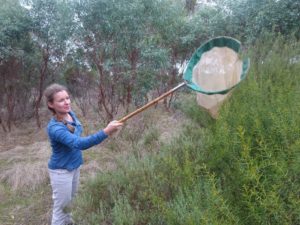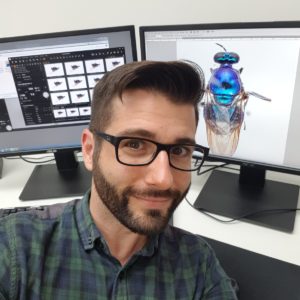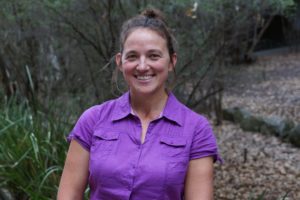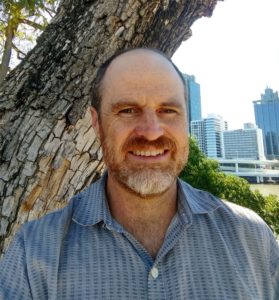Dr Seraina Klopfstein (Natural History Museum, Basel, Switzerland)
 Seraina is Curator of Entomology at the Natural History Museum in Basel (Switzerland). She has conducted a postdoc in Australia and is still very enthusiastic about the Austral (entomo-)fauna. Fascinated by the diversity of nature from an early age, she is now a specialist of parasitoid wasps of the family Ichneumonidae – one of the groups for which our knowledge lags most strongly behind the actual diversity. While basic taxonomic research keeps inspiring her to make slight detours into functional morphology, ecology and courtship behaviour, she has also contributed to method development in systematics and phylogenetics, especially with respect to the design of phylogenetic studies and to the calibration of the molecular clock. The latter has recently also sparked her interest in ichneumonid fossils and in the modelling of morphological characters within the framework of total-evidence dating. Currently, she is working on describing more of the unknown past and present ichneumonid fauna, and on dating the tree of these parasitoids in order to obtain a timeline for their co-evolution with their hosts.
Seraina is Curator of Entomology at the Natural History Museum in Basel (Switzerland). She has conducted a postdoc in Australia and is still very enthusiastic about the Austral (entomo-)fauna. Fascinated by the diversity of nature from an early age, she is now a specialist of parasitoid wasps of the family Ichneumonidae – one of the groups for which our knowledge lags most strongly behind the actual diversity. While basic taxonomic research keeps inspiring her to make slight detours into functional morphology, ecology and courtship behaviour, she has also contributed to method development in systematics and phylogenetics, especially with respect to the design of phylogenetic studies and to the calibration of the molecular clock. The latter has recently also sparked her interest in ichneumonid fossils and in the modelling of morphological characters within the framework of total-evidence dating. Currently, she is working on describing more of the unknown past and present ichneumonid fauna, and on dating the tree of these parasitoids in order to obtain a timeline for their co-evolution with their hosts.
Dr Bryan Lessard (CSIRO National Research Collections Australia, Canberra)
 Dr Bryan Lessard is an entomologist at CSIRO’s National Research Collections Australia researching the taxonomy and evolution of medically important flies and mosquitoes. Bryan’s research interests lie in biodiversity discovery, having discovered more than 150 species new to science and officially named more than 50 species from Australia and New Zealand. He also enjoys working in collaborative teams to identify alternative insect pollinators using metabarcording, and unlock the mysteries of natural history specimens using digitisation and collection genomics. More recently Bryan has developed an interest in edible insects, having consulted with local insect farmers and industry to help develop guidelines on the use of insects to feed the growing population. Bryan’s passion for promoting natural history collections to a global audience began in 2011 when he named a new species of horse fly after Beyoncé, which sparked a global conversation on the importance of taxonomy and collection-based research. Since then, Bryan, sometimes better known as Bry the Fly Guy, has built a strong rapport with the media to promote taxonomy to a younger generation through TV, radio and social media. He has appeared on Gardening Australia and The Project, given a TEDx talk, hosted fortnightly radio segments on ABC and lead the Australian Geographic Citizen Scientist Expedition for three years to Lord Howe Island to discover new species of insects.
Dr Bryan Lessard is an entomologist at CSIRO’s National Research Collections Australia researching the taxonomy and evolution of medically important flies and mosquitoes. Bryan’s research interests lie in biodiversity discovery, having discovered more than 150 species new to science and officially named more than 50 species from Australia and New Zealand. He also enjoys working in collaborative teams to identify alternative insect pollinators using metabarcording, and unlock the mysteries of natural history specimens using digitisation and collection genomics. More recently Bryan has developed an interest in edible insects, having consulted with local insect farmers and industry to help develop guidelines on the use of insects to feed the growing population. Bryan’s passion for promoting natural history collections to a global audience began in 2011 when he named a new species of horse fly after Beyoncé, which sparked a global conversation on the importance of taxonomy and collection-based research. Since then, Bryan, sometimes better known as Bry the Fly Guy, has built a strong rapport with the media to promote taxonomy to a younger generation through TV, radio and social media. He has appeared on Gardening Australia and The Project, given a TEDx talk, hosted fortnightly radio segments on ABC and lead the Australian Geographic Citizen Scientist Expedition for three years to Lord Howe Island to discover new species of insects.
Dr Romina Rader (University of New England, Armidale)

Dr Owen Seeman (Queensland Museum, Brisbane)
